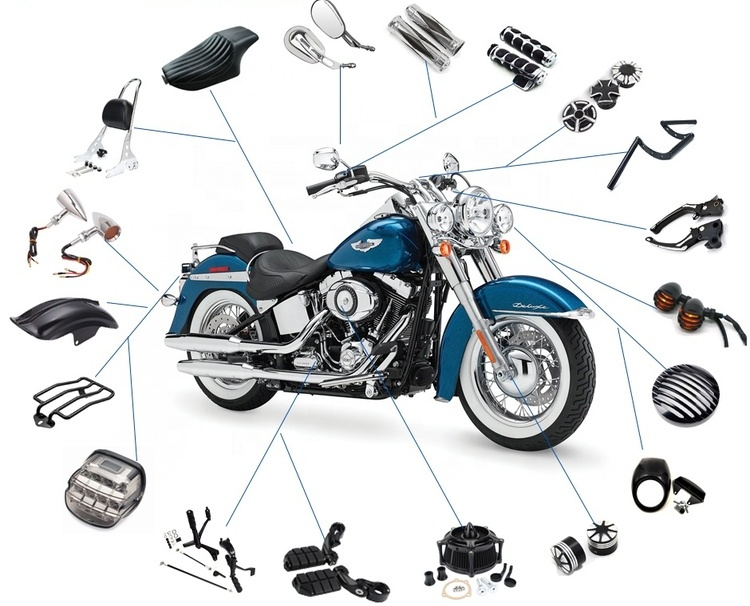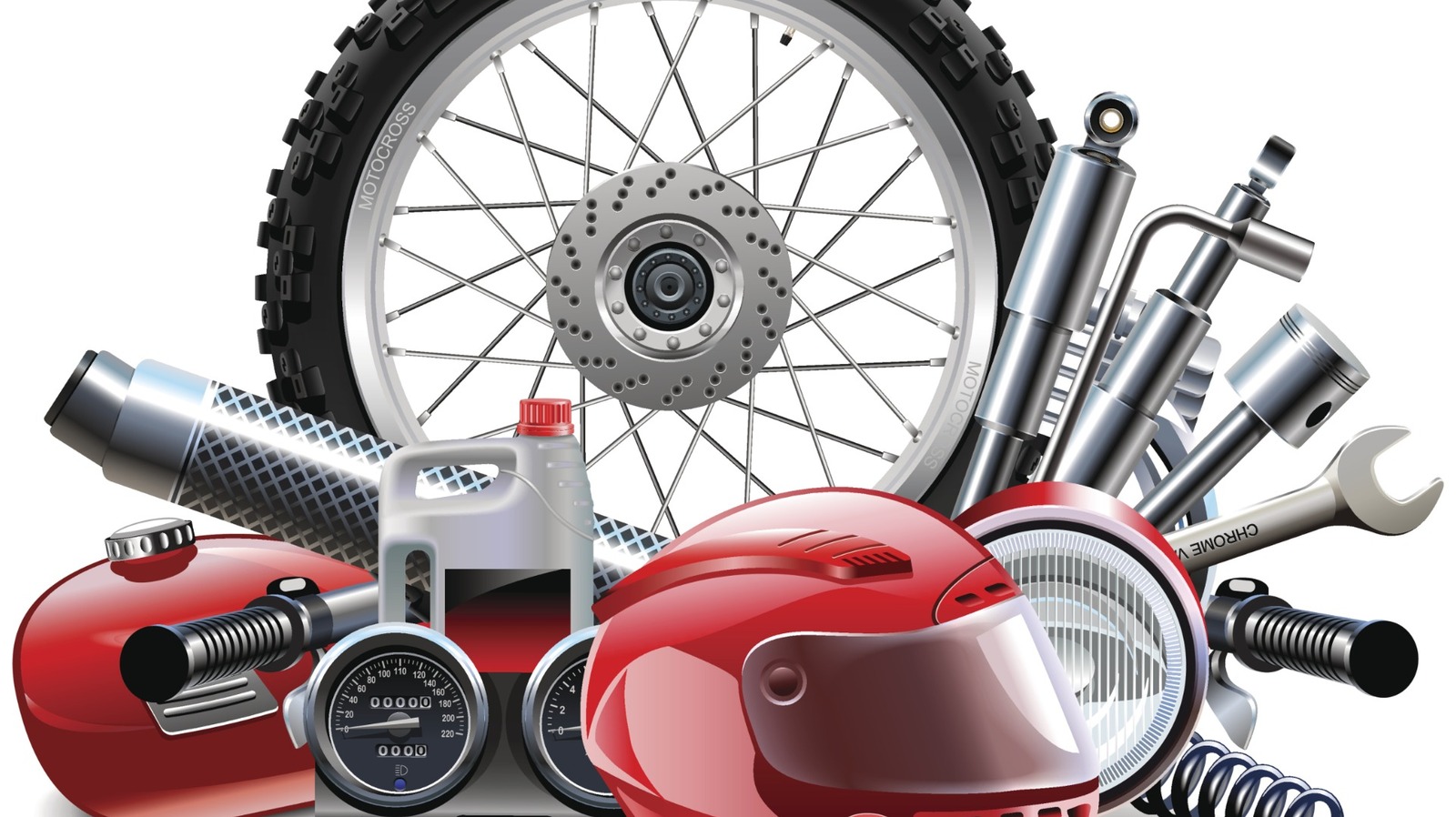A Comprehensive Guide to Choosing the Ideal Bike Parts for Your Ride
Choosing the appropriate bike components is crucial for any bicyclist. Each element plays a considerable duty in enhancing efficiency and convenience. Understanding the kind of bike and its designated usage is fundamental. From handlebars to tires, every information issues. This guide will certainly discover the important elements of picking these components. The right choices can boost any type of trip, yet what certain variables should one think about to achieve the ideal results?
Understanding Bike Types and Their Elements
Just how can one select the ideal bike components without recognizing the different sorts of bikes? Each bicycle kind-- hill, crossbreed, cruiser, and road-- functions distinct parts tailored to its particular feature. Mountain bicycle, for instance, are outfitted with durable structures and wider tires for off-road stability, while road bikes prioritize light-weight materials and wind resistant styles for speed on smooth surfaces.Hybrids blend elements from both hill and roadway bikes, offering versatility for varied terrains. Cruisers, designed for comfort, feature larger seats and handlebars for a more relaxed riding placement. Each type likewise uses distinct gear systems, brakes, and wheels that deal with their desired use.Understanding these differences is necessary for choosing effective and suitable bike parts. A cyclist's option can notably boost efficiency, safety, and overall satisfaction. By identifying the features of each bike kind, one can make educated choices when upgrading or replacing elements.
Key Factors To Consider for Picking Handlebars
When selecting handlebars, a motorcyclist needs to take into consideration numerous aspects that can considerably influence convenience and control. One primary factor to consider is the size of the handlebars, as it affects security and leverage during adventures. Larger handlebars typically offer much better control, especially in technical terrains, while narrower ones might enhance aerodynamics for racing.Additionally, the surge or decrease of the handlebars impacts the cyclist's position. Greater handlebars promote a much more upright setting, minimizing strain on the back, while lower ones can boost aerodynamics. The form of the handlebars is additionally vital; options like flat, riser, or decrease bars accommodate different riding designs and preferences.Material is an additional crucial element, with light weight aluminum and carbon fiber being popular for their balance of weight and toughness. Eventually, the appropriate handlebars need to line up with the cyclist's planned usage, making sure a pleasurable and effective biking experience.
Choosing the Right Saddle for Convenience and Efficiency
Choosing the best saddle is crucial for making the most of comfort and efficiency during rides. An appropriate saddle can considerably affect a cyclist's experience, directly influencing power degrees and general satisfaction. When choosing a saddle, factors such as cushioning, width, and shape ought to be very carefully considered. The saddle's size should line up with the rider's sit bone dimensions, guaranteeing sufficient support. In addition, cushioning choices vary amongst motorcyclists; some may favor marginal padding for a much more direct connection to the bike, while others might look for luxurious cushioning for boosted comfort on longer adventures. Saddle shape likewise plays an important role, as it affects the distribution of stress throughout pedaling. Furthermore, products used in building can impact weight and longevity. Eventually, examining various saddles is crucial, as individual convenience differs substantially. A thoughtful strategy to saddle choice can cause better performance and a more delightful biking experience.
The Significance of Top Quality Tires for Different Terrains
Picking the right tires is important for optimal performance across different surfaces. Various surface areas require particular tire attributes, such as tread patterns and rubber substances, to assure traction and durability. Additionally, the durability and durability of tires can considerably affect a biker's overall experience and security when driving or trail.

Terrain-Specific Tire Includes
Exactly how does the terrain effect tire performance? Various terrains call for unique tire functions to optimize efficiency and safety and security. Mountain cycling on rocky tracks demands tires with aggressive tread patterns to supply grasp and security. On the other hand, road biking on smooth surfaces benefits from narrower tires that reduce rolling resistance.In wet or muddy problems, tires developed with much deeper grooves can funnel water successfully, preventing hydroplaning. Furthermore, softer compounds might improve traction on slick surfaces, while harder compounds offer longevity on harsh courses. Understanding these terrain-specific tire functions is important for cyclists aiming to enhance their riding experience. Choosing the suitable tire not only influences managing however additionally overall convenience, making it important for riders to match their tires to their desired surface.
Tire Durability and Efficiency
Quality tires greatly affect a biker's efficiency and security throughout different terrains. The resilience of tires is important for enduring the roughness of various surfaces, from tough tracks to smooth roads. Greater quality tires usually feature strengthened sidewalls and progressed rubber substances, which boost their longevity and hold. Tires created for off-road conditions generally have much deeper footsteps that offer much better grip on loose surface areas, while roadway tires prioritize a smoother profile for decreased rolling resistance. In damp problems, tires with specialized walk patterns can enhance handling and minimize the danger of hydroplaning. Ultimately, buying high quality tires customized to certain riding atmospheres can significantly enhance general biking experience, making certain both efficiency and safety and security.
Gearing Systems: Discovering the Perfect Suitable For Your Riding Style
While several bikers recognize the value of a great bike frame or wheels, the tailoring system plays a crucial duty in enhancing performance and convenience on the roadway or trail. Picking the ideal tailoring system depends mostly on private riding style and terrain. For example, road cyclists typically gain from a portable tailoring arrangement, enabling for smoother changes and higher rates on level surface areas. On the other hand, mountain bicycle riders might favor a larger series of gears to deal with steep climbs and rough descents.Cyclists need to additionally think about the number of equipments; a 1x system simplifies changing and lowers weight, while a 2x or 3x system supplies versatility for diverse terrains. Comprehending gear proportions is crucial, as lower proportions assist in less complicated pedaling uphill, while higher ratios support speed on flat stretches. Inevitably, the excellent gearing system harmonizes with the cyclist's choices, guaranteeing a satisfying and effective biking experience.
Enhancing Your Trip With the Right Brakes
Picking the ideal stopping system is as important as selecting the appropriate tailoring for a bike. The high quality and kind of brakes can markedly affect a bicyclist's control, safety, and total riding experience. Bikers frequently encounter a choice between edge brakes and disc brakes. Rim brakes are normally lighter and much easier to maintain, making them a prominent option for road bikes, while disc brakes offer superior stopping power and efficiency in varied weather, perfect for mtb and touring setups.Moreover, brake pads play an important duty in stopping efficiency. Choosing the right product-- such as natural, metal, or semi-metallic-- can boost performance based on riding conditions and personal preferences. Additionally, correct alignment and normal maintenance of the braking system assurance reliable performance and longevity. Inevitably, buying the appropriate brakes customized to individual riding designs can improve safety and security and enjoyment on every trip.
Upgrading Accessories for a Much Better Cycling Experience
Updating accessories can substantially boost a cyclist's experience when driving. Necessary safety gear, such as helmets and lights, incorporated with convenience enhancements like ergonomic grips and cushioned seats, can make a significant distinction. These upgrades not only boost security but additionally promote much longer and more satisfying adventures.
Important Safety Gear
Security equipment is a necessary part of a biker's toolbox, boosting both protection and convenience when traveling. Headgears are one of the most important product, substantially decreasing the danger of head injuries in situation of a mishap. High-visibility garments and devices, such as reflective vests and lights, assure that bicyclists continue to be noticeable to motorists, particularly in low-light conditions. Handwear covers provide hold and decrease the probability of sores, while knee and joint pads can provide extra security throughout drops. Selecting suitable shoes with an excellent grasp can likewise enhance safety and security while biking. Buying high quality safety and security gear not only promotes a safer adventure but additionally increases a biker's self-confidence, allowing them to enjoy their biking experience to the max.
Convenience Enhancements and Upgrades
Bicyclists usually seek to boost their riding experience beyond fundamental safety and security actions. Convenience enhancements and upgrades play a vital role in accomplishing this goal. One of the most considerable upgrades is a premium saddle, made to offer maximum support and decrease pain during longer trips. In addition, handlebar grasps that offer much better ergonomics can minimize strain on hands and wrists. Buying cushioned cycling shorts can furthermore boost comfort about his by decreasing friction and stress points. In addition, shock-absorbing seat articles and larger tires can improve ride top quality by moistening vibrations from rough surface - Oem Parts New Zealand. Lastly, adjusting the bike fit warranties that settings are ideal for private motorcyclists, bring about a much more delightful and comfy biking experience
Regularly Asked Questions
Exactly how Do I Maintain My Bike Components for Durability?
Maintaining bike parts for long life includes normal cleaning, lubrication, and evaluation. Correct storage far from dampness, prompt replacement of worn parts, and adherence to supplier standards can substantially improve the life-span and performance of the bicycle.
What Devices Do I Need for Bike Component Installation?
To mount bike components successfully, one typically needs necessary tools such as wrenches, screwdrivers, tire bars, a multi-tool, and a pump. These tools facilitate correct assembly, guaranteeing ideal efficiency and long life of the bike parts.
Exactly how Often Should I Change Bike Components?

Can I Mix and Suit Parts From Different Brands?
Matching and mixing bike parts from various brand names is feasible, but compatibility is crucial (Oem Parts New Zealand). Factors like dimensions, materials, and layout should be thought about to guarantee peak performance and safety and security, highlighting the significance of study prior to any mix
What Are the Signs of Damaged Bike Components?
Indicators of worn-out bike parts consist of uncommon noises during adventures, reduced performance, noticeable damage such as cracks or rust, and trouble changing gears. Normal inspections can help determine these concerns before they jeopardize security and performance. Mountain bikes, for instance, are equipped with robust frames and larger tires for off-road stability, while roadway bikes focus on lightweight products and wind resistant styles for speed on smooth surfaces.Hybrids blend aspects from both hill and roadway bikes, providing versatility for diverse surfaces. Alternatively, road cycling on smooth surface areas advantages from narrower tires that decrease rolling resistance.In wet or muddy problems, tires made with deeper grooves can direct water successfully, protecting against hydroplaning. Recognizing these terrain-specific tire functions is essential for bikers intending to boost their riding experience. Tires developed for off-road conditions generally have much deeper footsteps that offer better traction on loosened surface areas, while roadway tires prioritize a why not try here smoother account for lowered rolling resistance. To set up bike components successfully, one commonly needs essential devices such as wrenches, screwdrivers, tire bars, a multi-tool, and a pump.